Hebe Verstappen, head of the TextielLab, spent the Christmas holidays going through the 2023 annual review. “What struck me most when looking at all the projects was the shared passion of everyone involved in creating them.”
“The world came to Tilburg this year and Tilburg went all over the world,” says Verstappen. “We collaborated with artists and designers from Finland, Lebanon, Latvia, South Korea, China, England and the US.” She points to the imposing tapestry that was developed with the Swedish photographer Miriam Bäckström for the Art Museum in Buffalo, New York; the tapestries that Jen Wood and Emanuel Admassu presented at the Venice Architecture Biennale; Kustaa Saksi’s retrospective exhibition in the Design Museum in Helsinki; Samira Boon’s innovative 3D fabrics for a Hermès store in Shanghai; and Yu-Mei Huang’s 3D-knitted sculptures that can be seen at the London Design Festival this autumn. These are just a few of the many projects featured in the annual review. In addition, a significant amount of work was produced that has not been exhibited yet. As we don’t want to spoil the surprise, this work will be included in next year’s review.
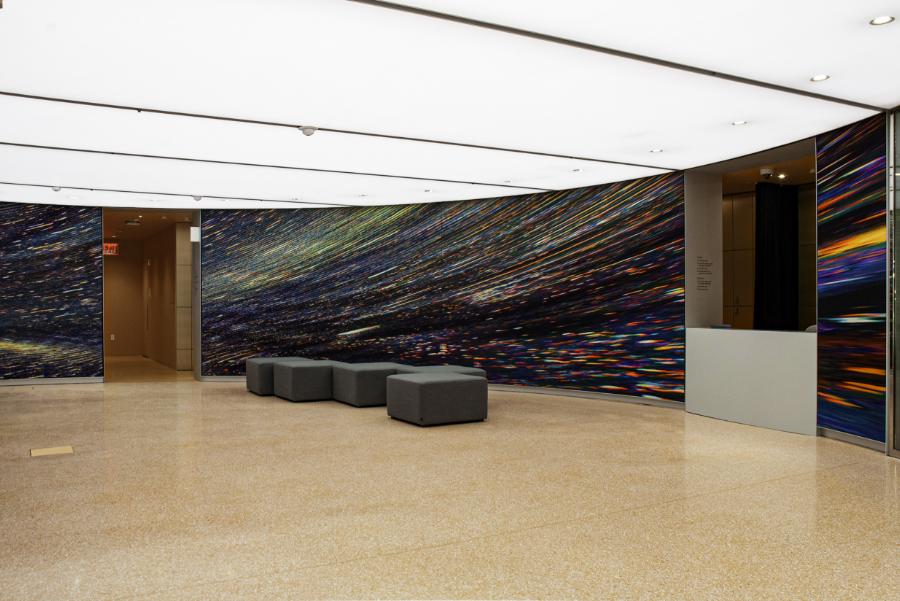
360-degree tapestry by Miriam Bäckström for the Art Museum in Buffalo. Photo: Brenda Bieger
“When you bring different talents together in the TextielLab’s ecosystem, wonderful things happen.”
Hebe Verstappen
Overview of the lab in 2023. Photo: Patty van den Elshout. Video: Blickfänger. Edit: Pippi Dijkstra
International community
Verstappen continues: “We’re really proud of the growing extramural collection. We are actively building an international community dedicated to exchanging knowledge and expertise.” The Advanced Textile Program, which was held for the second time in 2023, is a good example of this. Together with artist Otobong Nkanga, the team held a series of selection interviews to assemble a balanced interdisciplinary group from the large number of applicants. “When you bring so much talent from different backgrounds together in the TextielLab’s ecosystem, wonderful things happen.”
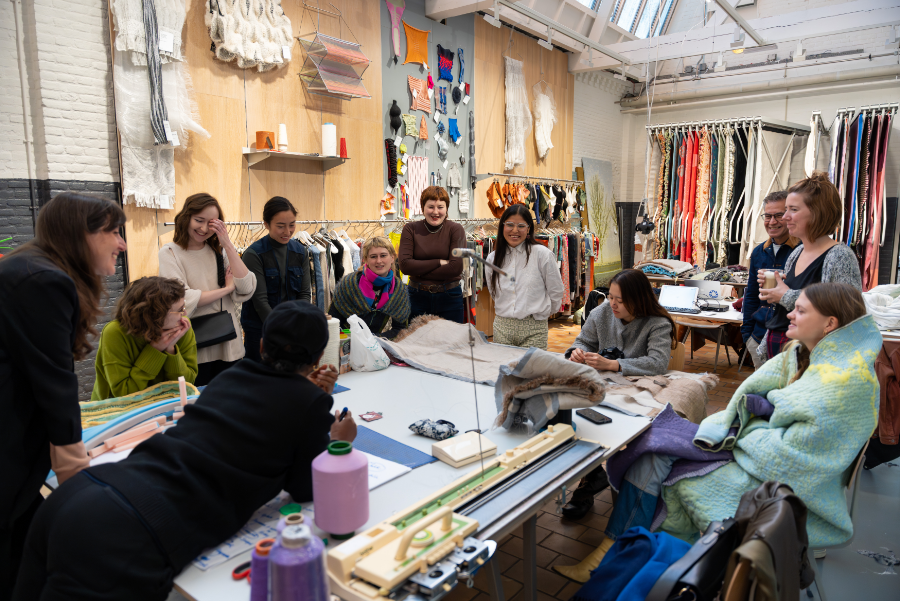
Participants of the Advanced Textile Program at work in the lab. Photo: Patty van den Elshout.
Focus on sustainability
A recurring theme in the annual review is sustainability. Take Erez Nevi Pana’s vegan tufted work, for example, the lamps made of recycled fishing nets by Philips and Aleksandra Gaca, Jef Montes’ sculptural and biodegradable dresses, and Maartje Fliervoet’s organically shaped artworks. “Projects like these are a signal for us to sharpen our focus on sustainability in the coming years,” says Verstappen. “We see it as our responsibility to expand the possibilities when it comes to working with sustainable yarns.” It’s a sentiment shared by all the departments. As Verstappen browses through the review, she reflects on the recent investments that have been made in people, machines and possibilities.
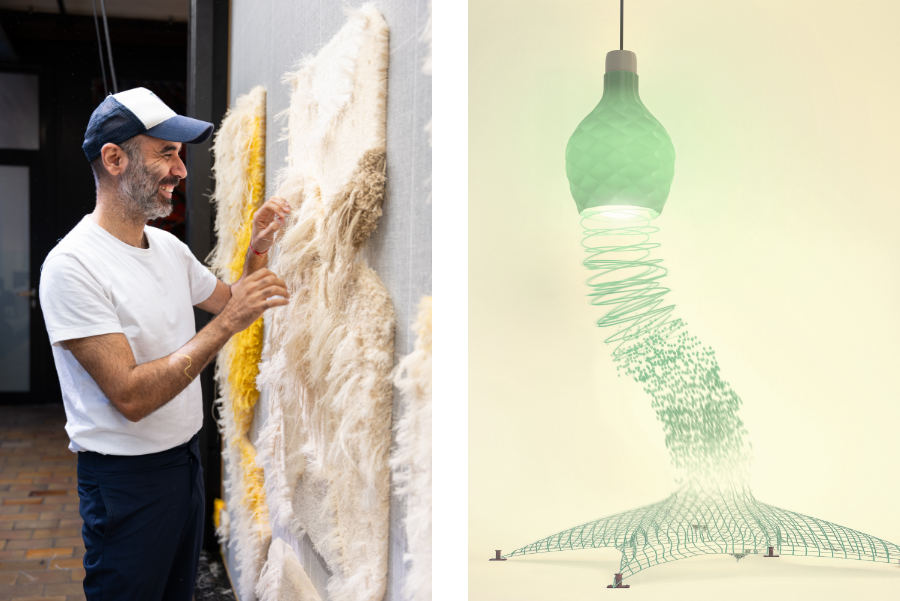
Erez Nevi Pana and his vegan tufting work. Photo: Patty van den Elshout / From fishing net to luminaire, by Aleksandra Gaca and Philips. Photo: via Aleksandra Gaca.
More people and machines
Last year, the team was expanded with two young technicians in the weaving and knitting departments, a material adviser, a passementerie expert and a head of the assembly atelier. We will introduce these new faces in the TextielLab newsletter in the coming months. Major investments were also made in new machines. 2021 saw the arrival of a loom that can weave fabrics up to 3.5 metres wide. This was followed in 2022 by a semi-industrial TC2 loom, which played a vital role in the R&D project around weaving with metal. The project reached a major milestone last year when it was scaled up to the computer-controlled Dornier loom. The lab team spent weeks manually warping the industrial machine with an aluminium warp. Their hard work paid off with the successful production of the first woven metal samples. The warp has since been changed back to organic cotton, but plans are underway to initiate an open call inviting designers to submit proposals related to weaving with metal. We are also editing the film that shows the results of the research. This will be available shortly.
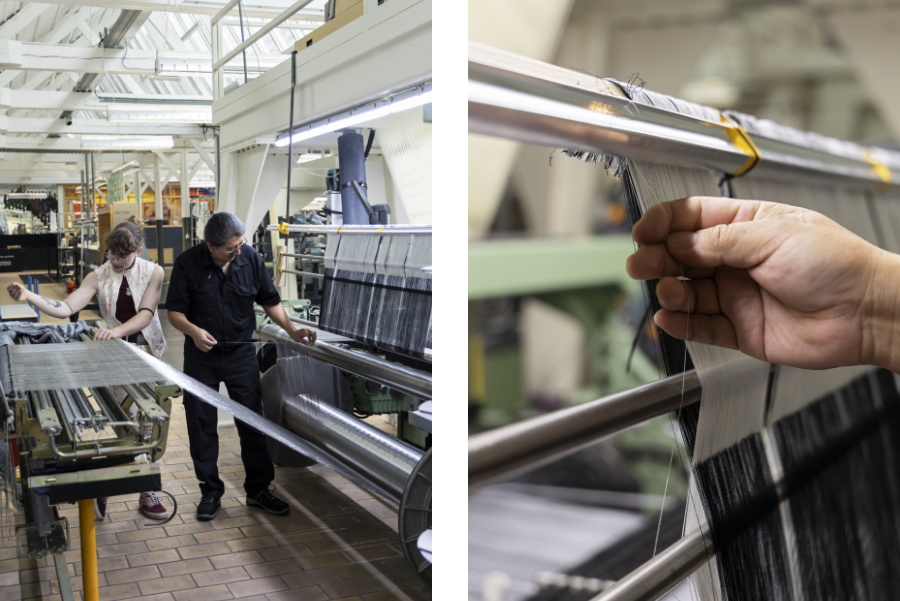
Knitting R&D programme
Following a series of weaving experiments, the TextielLab recently launched a new knitting R&D programme. The annual review features several fully fashioned knitted works, which means they were 3D knitted on the machine itself. To further explore the potential of this technique, a new flat knitting machine was installed in December. The so-called S-machine is currently being used by Belgian AI artist Elmo Mistiaen, who is working with product developer Sarena Huizinga on the initial phase of the knitting R&D programme. He will be followed in 2024 by Marlou Breuls and Henrik Vibskov. The latter also has plans for the new circular machine that was installed in 2023. In the past year, the lab’s circular knitting and flat knitting experts introduced each other to ‘their’ machines, with the aim of increasing cross-pollination between the two techniques. Anyone who comes to work in the lab this year is likely to see the knitting R&D programme in action. Time has been reserved throughout the year for the three selected artists to conduct in-depth experiments, which will ultimately result in a large object.
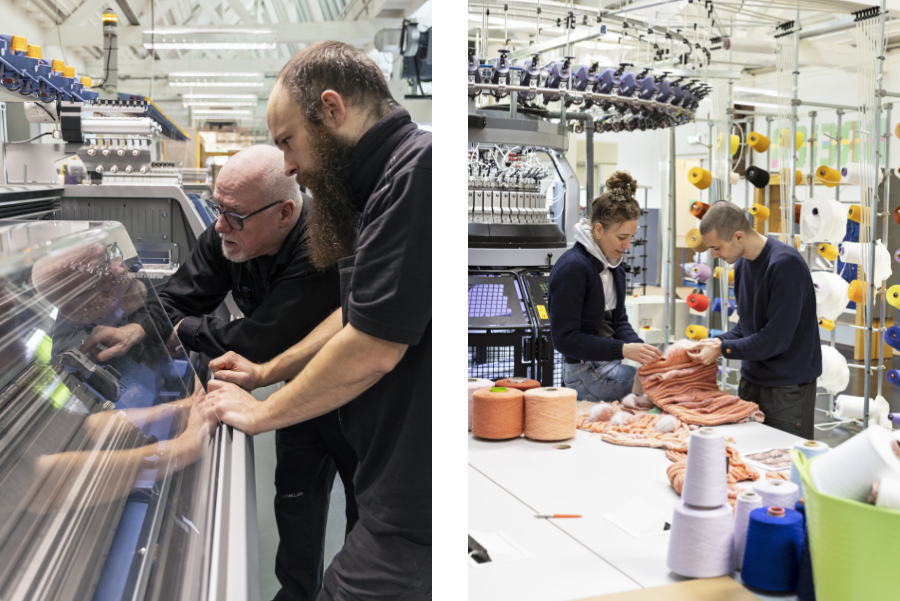
The new s-machine is being installed in the lab. Photo: Josefina Eikenaar. / Product developer Sarena Huizinga and artist Elmo Mistiaen explore the flat knitting machine. Photo: Josefina Eikenaar.
Museum showcase
These large objects will be shown in a new exhibition in the autumn appropriately titled Volume – transforming identities. “I’m extremely grateful that as a museum we get to showcase the projects we make in the TextielLab,” Verstappen says. In 2023, three exhibitions did just that. Textile now offered an overview of recent technical highlights, Is it alive? attracted international media attention with its magical moving installations, while Secrets of making #3 provided a behind-the-scenes look at the production process, including for younger visitors. This year, designers and artists will have even more opportunities to showcase their work. Besides exhibitions in the main exhibition space (including Secrets of making #4), the viewing gallery in the museum’s new-build wing will display work made in the lab by young talent: the participants of the Advanced Textile Program, national and international graduates and, of course, the lab’s interns. A symposium programme is also in the works. “We have a full and varied programme planned for 2024,” says Verstappen. “It’s going to be an exciting year in Tilburg.”
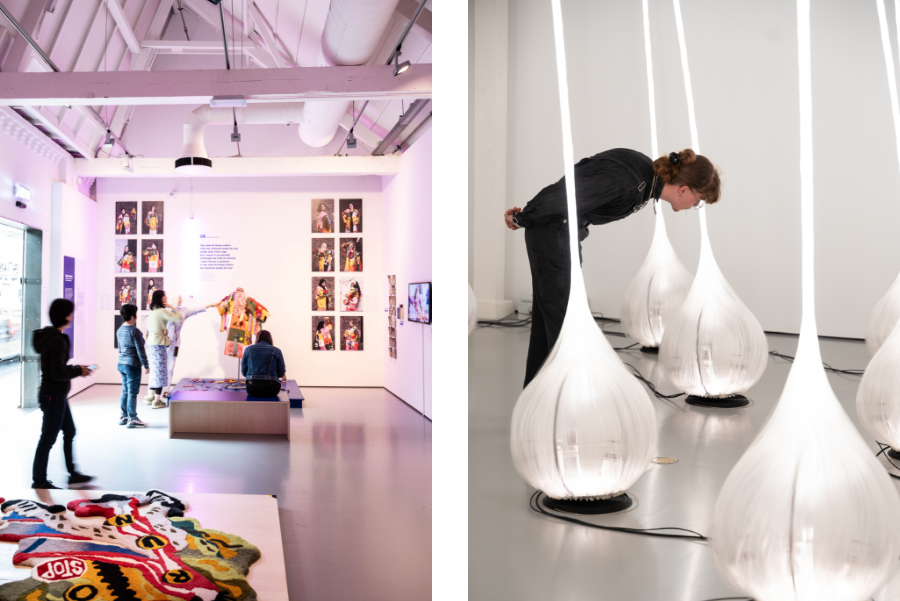
Exhibition ‘Textile Now – each thread tells a story’ at the TextielMuseum. Photo: Kevita Junior / Installation ‘I am Storm’ by DRIFT at the ‘Is it alive?’ exhibition. Photo: Patty van den Elshout.
Text: Willemijn de Jonge